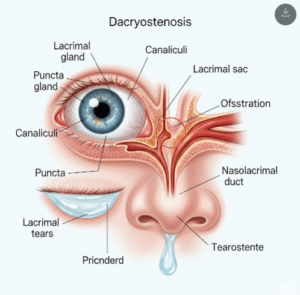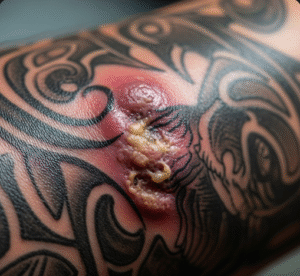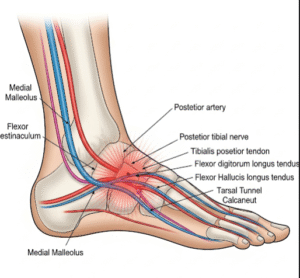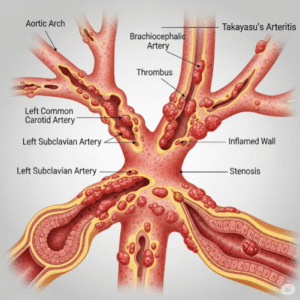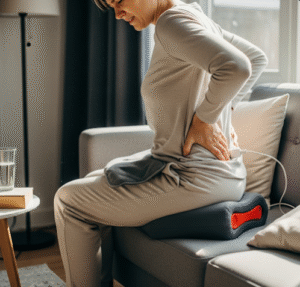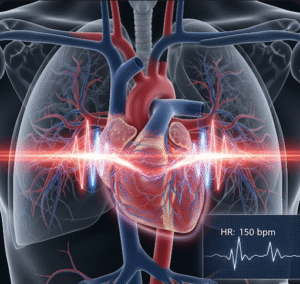Overview
An allergic reaction is the body’s exaggerated immune response to a normally harmless substance, known as an allergen. These reactions can range from mild itching and sneezing to life-threatening anaphylaxis. Allergies are increasingly common in South Korea due to urbanization, air pollution, changes in diet, and increased exposure to allergens. Accurate diagnosis and timely treatment are essential to prevent complications and ensure a high quality of life.
What is an Allergic Reaction?
An allergic reaction occurs when the immune system misidentifies a harmless substance—such as pollen, food, dust mites, or medications—as a threat. In response, it produces antibodies (IgE), which trigger the release of chemicals like histamine. These chemicals cause symptoms such as swelling, redness, itching, and inflammation.
Reactions may be:
- Mild (itching, rashes, sneezing)
- Moderate (swelling, nausea)
- Severe (anaphylaxis, which can be fatal without treatment)
Symptoms
Symptoms vary depending on the type and severity of the allergy:
Skin Reactions
- Hives (urticaria)
- Rash
- Redness and itching
- Swelling (especially around eyes or lips)
Respiratory Symptoms
- Sneezing
- Nasal congestion
- Coughing or wheezing
- Shortness of breath
- Asthma attacks
Gastrointestinal Symptoms
- Nausea or vomiting
- Diarrhea
- Stomach cramps
Systemic Reaction (Anaphylaxis)
- Rapid heartbeat
- Swelling of tongue/throat
- Difficulty breathing
- Drop in blood pressure
- Loss of consciousness
Causes
Allergic reactions can be triggered by many substances, including:
- Food allergens: Eggs, milk, peanuts, shellfish, soy, wheat
- Inhaled allergens: Pollen, dust mites, mold spores, pet dander
- Insect stings: Bee or wasp venom
- Medications: Antibiotics (e.g., penicillin), aspirin, NSAIDs
- Latex
- Cosmetics and skin products
- Air pollution: A growing factor in Korea’s urban areas
Risk Factors
- Genetic predisposition (family history of allergies, asthma, eczema)
- Children and young adults
- Living in urban or industrial environments
- High pollen seasons in Korea (spring and autumn)
- Previous allergic episodes
- Underlying conditions such as asthma or atopic dermatitis
Complications
- Anaphylaxis (life-threatening emergency)
- Chronic sinus infections or asthma
- Sleep disturbances
- School/work absences
- Mental health effects due to chronic discomfort or anxiety
Prevention
- Avoid known allergens: Through testing and lifestyle adjustments
- Use air purifiers: To reduce dust and pollen at home
- Check food and medication labels
- Carry emergency medication if you have a history of severe allergies
- Wear medical alert jewelry (e.g., in case of drug allergies)
- Seasonal precautions: Monitor pollen levels, especially in Korea’s spring and fall
Treatment Options in Korea
South Korea is well-equipped with world-class medical facilities for managing allergic reactions. From emergency care to long-term allergy management, various services are available:
1. Emergency Care
- Anaphylaxis treatment with intramuscular epinephrine (adrenaline) in ERs
- Oxygen therapy and IV fluids in severe cases
- Available 24/7 in hospitals like:
- Asan Medical Center
- Samsung Medical Center
- Seoul National University Hospital
2. Allergy Testing
- Skin prick tests
- Specific IgE blood tests
- Oral food challenge tests (in controlled settings)
3. Medications
- Antihistamines (for mild to moderate symptoms)
- Corticosteroids (oral or nasal, for inflammation)
- Bronchodilators (in asthma-related reactions)
- Epinephrine auto-injectors (e.g., EpiPen) for severe allergic individuals
4. Allergen Immunotherapy (Desensitization)
- Allergy shots or tablets (SLIT) to build long-term tolerance
- Offered at major allergy clinics in Korea such as:
- Yonsei Severance Allergy & Clinical Immunology Center
- Korea University Anam Hospital
5. Dietary & Lifestyle Counseling
- Guidance on allergen-free diets
- Education on home environment control (e.g., mold, dust, pet allergens)




